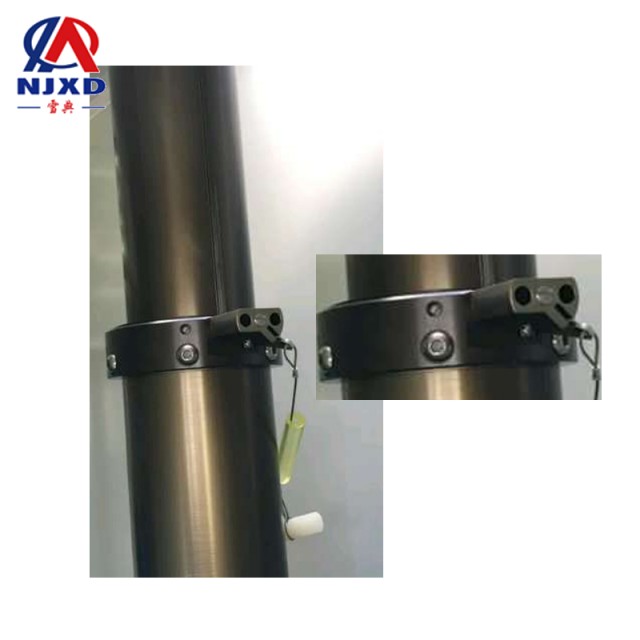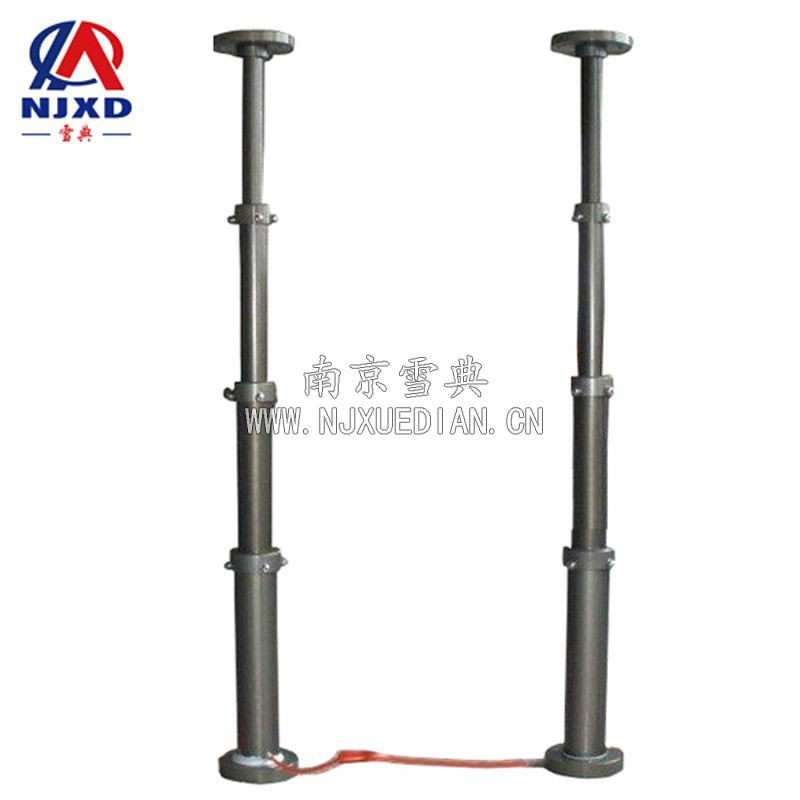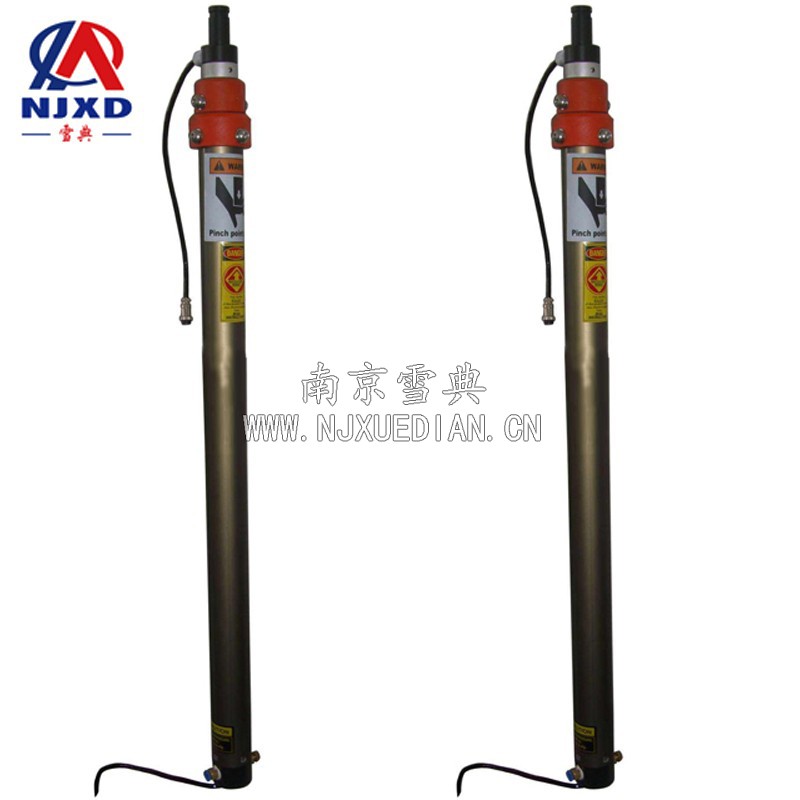NEWS
Influencing Factors and development process of stainless steel lift rod materials
Time:2021-09-16 View:

Influencing factors
No matter stainless steel plate or heat-resistant steel plate, the comprehensive performance of the austenite-type steel plate is the best, with sufficient strength, excellent plasticity and low hardness, this is also one of the reasons why they are widely used. The tensile strength, yield strength and hardness of austenitic stainless steel are similar to most other metal materials, and increase with the decrease of temperature; The plasticity decreases with the decrease of temperature. Its tensile strength increases more evenly in the temperature range of 15~80°C. More importantly, with the decrease of temperature, its impact toughness decreases slowly and there is no brittle transition temperature. Therefore, stainless steel can maintain sufficient plasticity and toughness at low temperature. The heat resistance of stainless steel refers to the thermal stability of both oxidation resistance and gas medium corrosion resistance at high temperature. It can be used in telescopic mast.
Influence of chromium
Chromium is the most important alloy element in austenitic stainless steel. The main reason for obtaining the stainless property and corrosion resistance of austenitic stainless steel is that under the action of quality, chromium promotes the passivation of the steel and keeps the steel stable passive state. ○ 1 Effect of chromium on the structure: in the austenitic stainless steel, chromium is an element that strongly forms and stabilizes the iron body, reducing the austenite area, and increasing with the content in the steel, the ferrite (δ) structure can appear in the austenite stainless steel. Research shows that in the chromium-nickel austenite stainless steel, when the carbon content is 0.1% and the chromium content is 18%, in order to obtain a stable single austenite structure, the required nickel content is the lowest, about 8%. In this regard, the commonly used 18cr-8ni chromium-nickel austenitic stainless steel is the most suitable one containing chromium and the ratio of nickel content. In austenitic stainless steel, with the increase of chromium content, the formation tendency of some intermetallic phases (such as δ phase) increases. When the steel contains molybdenum, the content of chromium will increase and the formation of X equality. As mentioned earlier, the precipitation of σ and X phases not only significantly reduces the plasticity and toughness of steel, moreover, under some conditions, the corrosion resistance of steel is also reduced, The increase of chromium content in austenitic stainless steel can reduce martensite hydrocarbon conversion temperature (Ms), thus improving the stability of austenite matrix. Therefore, it is difficult to obtain martensite structure even after cold processing and low temperature treatment of high chromium (for example, more than 20%) austenitic stainless steel.
Chromium is a strong carbide forming element, and it is no exception in austenitic stainless steel. Cr23C6 is a common chromium carbide in austenitic stainless steel. When molybdenum or chromium is contained in steel, it can also be seen that carbide such as expired Cr6C, their formation will have an important impact on the properties of steel under certain conditions. ○ 2 Effect of chromium on properties: Generally speaking, as long as the austenite stainless steel maintains complete austenite structure without the formation of δ ferrite, only increasing the chromium content in the steel will not have a significant impact on the mechanical properties, chromium has the greatest influence on the performance of austenitic stainless steel in terms of corrosion resistance, which is mainly manifested as: chromium improves the resistance of steel to oxidant and the performance of acid accumulator chloride medium; Under the combined action of nickel, molybdenum and copper, chromium improves the resistance of steel to some reducing media, organic acids, urea and alkali media; Chromium also improves local corrosion resistance of steel, such as intergranular corrosion. Spot corrosion, crevice corrosion and stress corrosion performance under certain conditions. The factor that has the greatest influence on the intergranular corrosion sensitivity of austenitic stainless steel is the carbon content in steel. The effect of other elements on intergranular corrosion mainly depends on its influence on the dissolution and precipitation behavior of carbide, in austenitic stainless steel, chromium can increase the solubility of carbon and reduce the dilution of chromium, thus increasing the chromium content is beneficial to the intergranular corrosion resistance of austenitic stainless steel, chromium can effectively improve the spot corrosion resistance and crevice corrosion resistance of austenitic stainless steel. When molybdenum or molybdenum and nitrogen exist in the steel at the same time, the effectiveness of chromium is greatly enhanced, although according to the research, the ability of molybdenum to resist spot corrosion and crevice corrosion is about 3 times that of chromium and the nitrogen is 30 times that of chromium, if there is no chromium or low chromium content in austenitic stainless steel, the point corrosion resistance and crevice corrosion resistance of molybdenum and nitrogen will be lost or not significant enough.
The effect of chromium on the stress corrosion resistance of austenitic stainless steel varies with the experimental medium conditions and actual use environment. In mgcl_2 boiling solution, the effect of chromium is generally harmful, however, under the stress corrosion conditions of water medium containing Cl-and oxygen, high temperature and high pressure water and spot corrosion, increasing chromium content in steel is beneficial to stress corrosion resistance. At the same time, chromium can also prevent intergranular stress corrosion tendency easily caused by the increase of nickel content in austenitic stainless steel and alloy, and stress corrosion of cracking (NaOH), the effect of chromium is also beneficial. Chromium not only has an important influence on the corrosion resistance of austenitic stainless steel, but also can significantly improve the oxidation resistance, vulcanization resistance, melting salt corrosion resistance and other properties of this kind of steel.

Influence of nickel
1 Effect of nickel on microstructure
Nickel is an element that strongly stabilizes austenite and expands the austenite phase region. In order to obtain a single austenite structure, the minimum nickel content required when the steel contains 0.1% carbon and 18% chromium is about 8%, this is the basic component of the most famous 18-8 chromium-nickel austenite stainless steel. In the austenite stainless steel, with the increase of nickel content, the residual ferrite can be completely eliminated and the tendency of σ phase formation can be significantly reduced; at the same time, the temperature of martensite to hydrocarbon decreases, and there is no lambda → M phase transformation. However, the increase of nickel content will reduce the solubility of carbon in austenitic stainless steel, thus enhancing the tendency of carbide precipitation.
2 Effect of nickel on properties
The influence of nickel on the mechanical properties of austenitic stainless steel, especially chromium-nickel austenitic stainless steel, is mainly determined by the influence of nickel on the stability of austenite. Within the range of nickel content that may undergo martensite transformation in steel, with the increase of nickel content, the strength of the steel decreases and the plasticity increases. Chromium-nickel austenitic stainless steel with stable austenite structure has excellent toughness (including extremely low temperature toughness), so it can be used as low temperature steel, it is well known that for chromium manganese austenitic stainless steel with stable austenite structure, the addition of nickel can further improve its toughness. Nickel can also significantly reduce the cold working hardening tendency of austenitic stainless steel, which is mainly due to the increase of austenite stability, reduction and even elimination of martensite transformation during cold working, at the same time, the cold work hardening effect on austenite itself is not obvious. The effect of the cold work hardening tendency of stainless steel is that nickel reduces the cold work hardening rate of austenitic stainless steel, reduces the room temperature and low temperature strength of steel, and improves plasticity, it determines that the increase of nickel content is beneficial to the cold working formability of austenite stainless steel, and the increase of nickel content can also reduce or even eliminate δ ferrite in 18-8 and 17-14-2 chromium nickel austenite stainless steel, thus improving its hot working performance, however, the decrease of δ ferrite is unfavorable to the weldability of these steel grades, which will increase the tendency of welding hot crack wire. In addition, nickel can also significantly increase chromium Manganese Nitrogen (chromium manganese nickel nitrogen) the hot working performance of austenitic stainless steel can significantly improve the yield of steel, The addition of nickel and the increase of nickel content lead to the increase of thermodynamic stability of steel. Therefore, austenitic stainless steel has better stainless property and oxidant resistance, and with the increase of nickel content, the performance of reducing resistant medium is further improved. It is worth pointing out that nickel is also the only important element to improve the resistance of austenite stainless steel to the stress corrosion of many dielectric transcrystalline forms. The influence of nickel on the corrosion resistance of austenite stainless steel in various acid media needs to be pointed out, under some conditions in high temperature and high pressure water, the increase of nickel content leads to the increase of intergranular stress corrosion sensitivity of steel and alloy, however, this adverse effect will be reduced or inhibited due to the increase of chromium content in steel and alloy. With the increase of nickel content in magnetic card austenitic stainless steel, the critical carbon content of intergranular corrosion decreases, that is, the intergranular corrosion sensitivity of steel increases, as for the resistance to spot corrosion and crevice corrosion of austenite stainless steel, the effect of nickel is not significant. In addition, nickel also improves the high temperature oxidation resistance of austenite stainless steel, this mainly improves the composition, structure and performance of chromium oxide film with nickel, and the higher the nickel content, the more harmful it is. This is mainly caused by low melting point nickel sulfide at the grain boundary in steel. Generally speaking, simple chromium-nickel (and chromium-manganese-nitrogen) austenitic stainless steel is only used under the conditions that require rust resistance and oxidant (such as nitric acid), molybdenum, as an important alloy element in austenitic stainless steel, is added to steel to further expand its application range. The main function of molybdenum is to improve the reducing medium of steel.

Influence of molybdenum
1 Effect of molybdenum on microstructure
Molybdenum and chromium are both elements that form and stabilize ferrite and expand ferrite phase region. Molybdenum has the same ability to form ferrite as chromium. Molybdenum also promotes the precipitation of intermetallic phase, such as σ phase, Kappa phase, and Laves, which will adversely affect the corrosion resistance and mechanical properties of steel, especially lead to plasticity, toughness decreases. In order to keep the single austenite structure of the austenitic stainless steel, with the increase of molybdenum content in the steel, the content of austenite forming elements (nickel, nitrogen, manganese, etc.) should also be correspondingly increased, in order to maintain the balance between ferrite and austenite forming elements in the steel.
2 Effect of molybdenum on properties
The oxidation effect of molybdenum on austenitic stainless steel is not significant. Therefore, when chromium-nickel austenitic stainless steel maintains a single austenite structure without intermetallic precipitation, the addition of molybdenum has little effect on its mechanical properties at room temperature. However, with the increase of molybdenum content, the high temperature strength of steel increases, such as durability, creep and other properties are greatly improved, so molybdenum-containing stainless steel is often used at high temperature. However, the addition of molybdenum increases the high temperature deformation resistance of steel. In addition, there is often a small amount of δ ferrite in steel, so the hot workability of molybdenum-containing stainless steel is worse than that of molybdenum-free steel. Moreover, the higher the molybdenum content, the worse the hot workability, in addition, molybdenum-containing austenitic stainless steel is prone to Kappa (σ) phase precipitation, which will significantly deteriorate the plasticity and toughness of the steel. Therefore, in the production, equipment manufacturing and application process of molybdenum-containing austenitic stainless steel, attention should be paid to prevent the formation of intermetallic phase in steel. Although molybdenum acts as a reducing medium for alloy elements, the causes of surface corrosion and crevice corrosion are not completely clear, a large number of experiments have pointed out that, the corrosion resistance of molybdenum is only effective when the steel contains a relatively high amount of chromium. Molybdenum mainly strengthens the corrosion resistance of chromium in the steel. At the same time, the corrosion inhibition effect of molybdenum after forming salt has also been proved by experiments. In terms of stress corrosion resistance of highly concentrated chloride solution, Although molybdenum, as a reducing medium of alloy elements, is not completely clear about the causes of spot corrosion resistance and crevice corrosion resistance, a large number of experiments have pointed out that, the effect of molybdenum is only effective when the steel contains a relatively high amount of chromium. Molybdenum mainly strengthens the corrosion resistance of chromium in the steel. At the same time, the buffering effect of molybdenum after forming molybdate has also been proved by experiments, although this experiment refers to the same in terms of stress corrosion resistance to high concentration chloride sinking. Molybdenum below 3# is harmful to the stress corrosion resistance of austenitic stainless steel, but because the common chromium-nickel austenitic stainless steel is mostly used in water medium containing trace chloride and saturated oxygen, the stress corrosion also originates from spot corrosion, so the chromium nickel molybdenum austenitic stainless steel containing molybdenum has higher spot corrosion resistance, therefore, in practical application, it often has better chloride stress corrosion resistance than molybdenum-free steel.

CATEGORY
NEWS
- Drive motor protection and market Electric lifting bracket
- Influencing Factors and development process of stainless steel lift rod materials
- Basic knowledge of pneumatic lifting rod sealing technology
- Circular section lift rod adopts feather key to prevent rotation
- Lift rod development direction of sealing technology